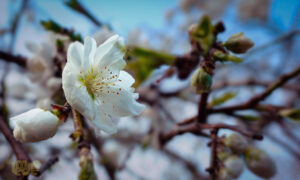The Young Scholars Convention on Japanese Studies
Words by Darlene Ena Gaspar
The translation of Murakami’s works into multiple languages has touched the hearts and minds of people all over the world. This goes to show that as a country known for its vivid culture, colorful traditions, and dynamic history, Japan exudes an enchanting aura that draws in onlookers to dive deep and embrace the wonders it holds. This is why I was more than ecstatic to have the opportunity to participate in the Young Scholars Convention on Japanese Studies hosted by The Japan Foundation, Manila. It was a first of its kind, an academic and collaborative platform for appreciation, enlightenment, and knowledge-sharing between young scholars and known experts on Japanese studies.
The convention was divided into three days that tackled three diverse themes, namely Day 1: Arts and Culture, Day 2: Japanese Language Education, and Day 3: Japanese Studies Intellectual Exchange. The inaugural day of the convention ratified our spirits in cultivating our understanding and consciousness of Japan. Each day was brought to life by a series of thought-provoking lectures that gave glimpses into various socio-cultural and political aspects that form the building blocks of the country.
Day 1: Japanese Arts and Culture
Alongside the challenges brought by the tides of time, the foundation of Japan’s heritage and traditions had been incessantly tested. Yet, through the bidirectional influence of Japanese art with culture, it has paved the way for the sustainable management and the innovative growth of its unparalleled beauty. With this, the primary theme tackled during the convention’s first day revolved around the development and prowess of Japanese art and culture.
The first lecture presented by Dr. Amparo Adelina Umali III focused on the development of traditional performance art throughout the history of Japan. The richness and intricate domain of this type of art illuminates the deep symbiotic relationship of art and culture, and how it flourished amidst the changing times. It was truly fascinating to discover how the divergent and convergent characteristics of Kabuki, Noh, and Bunraku bring about their own artistic compositions that differentiate them from each other. With this, Japanese performing art illustrates how the whole tone and setup down to the most minuscule details of the performance are carefully curated through years of dedication and commitment to the craft.
Beyond the traditional domain of Japanese art, the lecture provided by Dr. Alona Guevarra showcased the ability of Japanese literature, specifically of the contribution of Haruki Murakami, to go beyond national borders. Language does not and will not hinder the affinity of humankind. It genuinely has the ability to connect and unify individuals from multiple cultures, no matter where they are.
As the first day of the convention came to a close, it made me wonder about how much culture and art can harmoniously infuse and transform each other. Yet, at the same time, stand on their own as separate entities.
Day 2: Japanese Language Education
The convention’s second day focused on giving us a brief yet intricate lecture on the Japanese language. Ms. Jen Hieida succinctly discussed how language is interwoven with the socio-cultural fabric of a nation. In its essence, language shapes the foundation of relationships and the growth of heritage itself. Having the opportunity to gain a basic grasp of how the Japanese language operates and concurrently learn basic sentence patterns was such a fun experience, especially as it created means to interact with other scholars. Widening my basic understanding of Japan by learning its language was a fulfilling moment. By conversing with other participants in separate breakout rooms, you are able to go beyond the constraint bound by the computer screen and get to know everyone from all parts of the Philippines on a more intimate level as fellow scholars of Japanese Studies. Overall, the second day of the convention amplified our enthusiasm to delve deeper into Japanese Studies. Totemo tanoshikatta desu! [It was a lot of fun!]
Day 3: Japanese Studies Intellectual Exchange
As Japan is a powerhouse that exudes illustrious power and influence worldwide, its impact upon the Philippines is deeply felt. With this, the modern diaspora and multiculturalism present in the Philippines and Japan were the central theme of the lectures given by Dr. Ron Vilog, Dr. Jocelyn Celero, and Dr. Benjamin San Jose during the convention’s third day. Throughout the series of lectures, I slowly awakened to the fact that Japan should not be placed inside a glass box to simply observe. The panelists analytically discussed how the nation has progressed and how it has gradually overcome prejudices throughout the centuries. It is a nation that has developed alongside the Philippines and mutually aided the development of culture and heritage in both countries. Indeed, it was a stimulating yet earnest discussion that has significantly influenced my own path in the field of Japanese studies.
As the convention came to a complete close, I have come to regard it as a meaningful experience that has deepened my fondness for understanding and appreciating the land of the rising sun. I got to learn so much not only from the lecturers but from other youth scholars as well. Having been a part of an academic space that was inclusive and encouraging made the convention more worthwhile. There is no doubt that the enlightenment brought forth by the convention will continue to prevail and produce scholars that will generously share the fruition of their knowledge with future generations.
Speakers:
- Dr. Amparo Adelina Umali III
- Dr. Alona Guevarra
- Ms. Jen Bernadette Hieida
- Dr. Ron Vilog
- Dr. Jocelyn Celero
- Dr. Benjamin San Jose
Darlene Ena Gaspar is an undergraduate student taking up Bachelor of Arts in International Studies Major in Japanese Studies and Minor in Political Science at the De La Salle University Manila.







